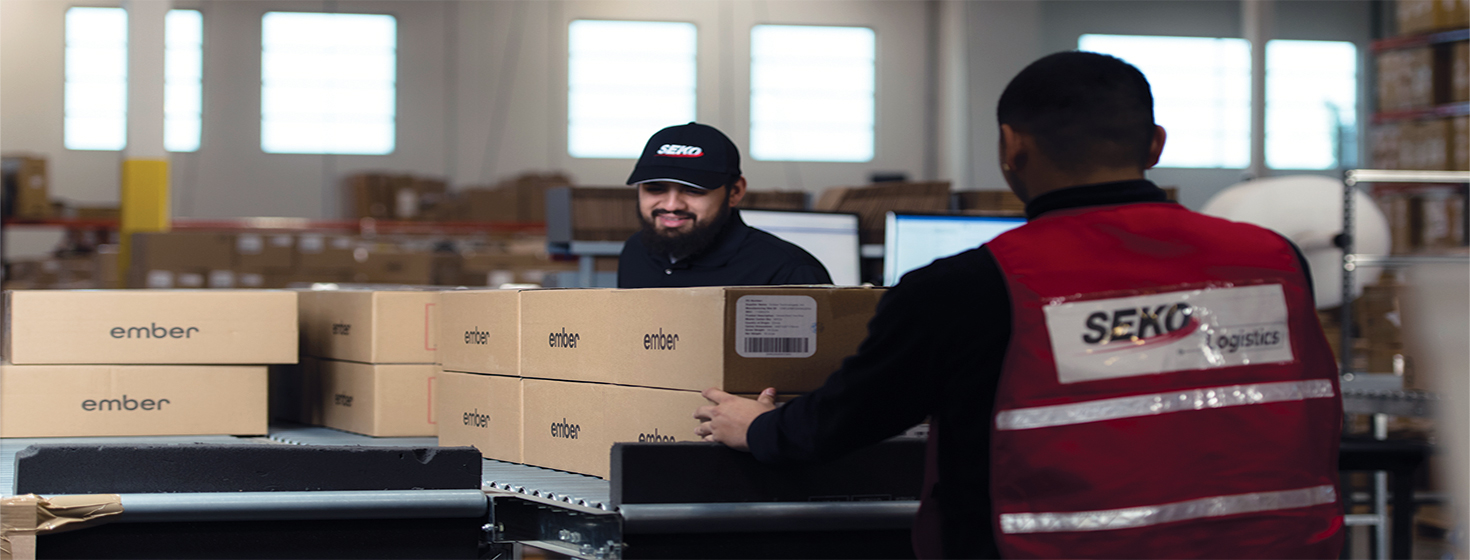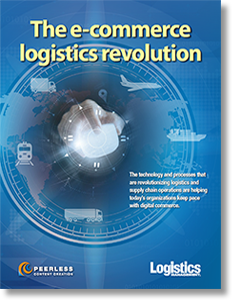Viability of High-Tech Data-Heavy Freight Forwarding Models

A wave of digital disruption surfaced in the freight forwarding sector a few years ago, with startups, suppliers, and even shippers using new technologies to develop a variety of innovative trade solutions, but the arrival of the COVID-19 pandemic poses the ultimate challenge to these new models.
The Global Freight Forwarding Arena
The art of predictive analytics and forecasting was making major strides in the global freight forwarding arena, helping all stakeholders refine real-time capacity tracking and logistics management with the major transportation modes.
However, analysts for London-based Transport Topics (Ti) have since brought into question the viability of the data-heavy newcomers in a marketplace thrown into chaos by the pandemic.
Before shippers can even begin to engage a freight forwarder in business these days, they must acquaint themselves post-haste with the current challenges confronting carriers on land, sea, and air.
Estimates made in Ti’s recent report, titled “Global Freight Forwarding Market Sizing 2020 COVID-19 Impact Analysis,” reveal those old suppositions may be thrown out the door.
“Container shipping was an early casualty of the COVID-19 crisis, while airfreight followed right behind, but reacted differently,” says Thomas Cullen, Ti’s senior analyst.
“Not only has demand fluctuated wildly in ocean shipping, but the supply-side has been disrupted. As a consequence, the response seen in airfreight reflects quite a different operational profile than that of ocean container shipping.”
In such a situation, container shipping’s “networked” profile is laid bare as the relationship between different ocean cargo container lines, container fleets, container terminals, and land-side transport requires some degree of equilibrium.
“When this response is put in place, the system has a tendency to malfunction,” says Cullen. “This has been central to the experience of China over February and March of 2020 and maybe the experience for the rest of the world.”
Freight Forwarding Prior to the COVID-19 Crisis
The container shipping market was emerging from a period of depressed demand and depressed prices at the beginning of 2020. Last year had seen some recovery in the first two quarters, with both demand and freight rates drifting upwards, however, this faded in the fourth quarter.
“That said, the underlying trend in the market seemed to offer some support, with the global container shipping fleet-size constrained by scrappage, but also by the need to convert to low-sulfur bunker fuel,” observes Cullen. “The COVID-19 crisis hit what was a gradually improving market.”
Meanwhile, the situation in airfreight has been contradictory, with some parts of the market approaching complete shutdown, while others are either recovering or booming. “Measuring this is exceptionally difficult,” says Cullen. “Even in normal times, airfreight data lags by several weeks, and in this case, data that is a few days old is useless as it can’t be extrapolated to create a trend.”
The situation in Asia is perhaps the most complex, notes Ti, and varies. Destinations in Northern China, for example, were initially reporting reasonable conditions with airports operating more-or-less normally; however, throughput volumes were restricted due to the lack of international passenger belly-freight capacity.
“Domestic traffic recovered much more quickly, but from a lower base,” says Cullen. “Land transport serving airports remains problematic with a shortage of capacity and drivers as many migrant workers are only gradually returning to major cities.”
Coping with Freight Forwarding Adversity
Dr. Zvi Schreiber, founder, and CEO of Freightos, a technology provider focused on instant freight quotes for freight forwarders and shippers, agrees with most of Ti’s conclusions.
“The U.S. and much of Europe are bracing for what could be the peak weeks of the outbreak,” says Schreiber. “However, despite a focus on essential goods, some delays and disruptions, and new measures to protect its own workforce, the logistics industry has continued to function and keep goods moving.”
According to Schreiber, although enterprise shippers in non-essential industries like retail are doing their best to cancel orders, many small and medium businesses with much smaller inventory needs seem to still be active and unaffected by the shift in demand.
“Despite a lull during the shutdown of Chinese manufacturing, U.S.-based small to medium-sized importers using our marketplace continued to ship goods, with last month’s number of shipments up 11% from the previous month and down only 2% over the same period last year.”
The next expected freight challenge will be on how to handle the anticipated wave of ocean freight ordered by U.S. businesses several weeks ago after manufacturing had recovered in China, but before the outbreak in the West had started to make an impact on demand.
“These ships are on their way and expected to arrive on U.S. shores for the next few weeks,” says Schreiber. “But many importers, particularly larger ones, are wary of gathering too much inventory for current demand. Instead, they are refusing shipments, delaying delivery, or not accepting deliveries due to the closure of some warehouses.”
To avoid bottlenecks and delays at ports, the Federal Maritime Commission and others are working on solutions for ocean carriers, including storage at origins or alternate ports and alternate off-port container storage. He further notes that while shipments of most goods are being deliberately delayed - some carriers are even sailing around Africa to Europe to extend sailing times and cut costs on canal fees - shipments of critical goods like masks and other personal protective equipment are being expedited right now, usually by air.
“This demand, together with the shortage of passenger jet cargo capacity, is keeping air cargo rates extremely high,” says Schreiber. “China’s additional restrictions on passenger flights have contributed to more volatility, with our marketplace data indicating between 25% and 35% increases in air rates out of China in May.”
High air rates have some shippers looking to switch to ocean shipping, Freightos data maintains. This shift, along with carriers continuing to blank large numbers of sailings for the coming weeks as demand slumps, have kept ocean rates stable in May, with China-U.S. West Coast rates even climbing by as much as 5%.
Freight Forwarding Digital Solutions
Klaus Lysdal, vice president of operations at online freight forwarder iContainers, notes that prior to the global pandemic, forwarders were largely concerned by the ongoing Brexit negotiations, the U.S.-China trade war, and IMO 2020. According to the Barcelona-based intermediary, “misinformed shippers reliant on inept forwarder practices” are hardly ready for the complexity COVID-19 has thrown into the mix.
“At this point, forwarders are still taking shippers’ word for what’s loaded in the container,” says Lysdal. “But from a forwarder’s perspective, that tends to increase the risk that clients who are not well-versed in hazardous cargo and looking to ship it may come to forwarders. This puts the forwarder in a weak position, especially if the shippers’ paperwork is not in order.”
Lysdal says that this is a major problem that needs to be addressed immediately, especially given the growing vessel sizes, as larger capacities increase the risks of having misdeclared cargo on board during a pandemic.
In terms of digitalization, Lysdal expects headway to be made. “Both digitalization and automation will become less of a novelty, mainly because a large part of the industry has already moved beyond the adoption phase and into the development phase,” he says.
“It’s almost to be expected that everything being developed or purchased these days will include some level of automation or digitalization.”
Indeed, over the past few years, the ocean cargo industry has seen an influx of software systems, apps, platforms, and companies that provide specific solutions for narrowly defined shipping challenges.
“That said,” adds Lysdal, “We feel that within the next few years global logistics managers should start to see more of these being integrated - and they will hopefully gain some much-needed traction in visibility and planning.”
Five Ways to Turn Chaos into Opportunity: What Customs Experts Want You to Know
Tom Gould, vice president of global Customs at Flexport, and Marcus Eeman, global Customs lead at Flexport, share the following checklist if you’re considering moving parts of your supply chain out of China.
1. Assess Data to Project Impact of Tariffs
Savvy organizations have evolved beyond spreadsheets - they know they’ll never find new opportunities for savings there.
Spreadsheets provide you with a very narrow scope to manage the impact of tariffs on your products. Let’s say you have all of your HTS codes for each of your products listed in a spreadsheet. That would allow you to do a VLOOKUP, or to identify a list of all of the exclusions or to determine which products will be affected by tariffs.
That doesn’t allow you to project the impact of tariffs, which is critical. With a sophisticated system, such as a global trade technology platform combined with powerful analysis software, experts are empowered to see clearly through the chaos. Instead of simply matching your products to HTS codes, a system like this could allow you to look at projected tariffs over time per country to identify the issues and costs of each tariff.
2. Read the Fine Print
New lists and exclusions are posted every few weeks, and should always be closely reviewed.
Read the fine print and pay careful attention to any corrections to previous exclusions. Modifications are not reprinted as new exclusions.
For example, in the last few weeks of 2019, there was a modification to the exclusions on certain types of compressors, changing the exclusion value from $500-$900 to $200-$1,500. This type of correction dramatically changes who is impacted.
3. Prepare for Additional Scrutiny
The US-China trade dispute put a microscope on US importers. Between 2017 and 2018 alone, there was a 49% increase in penalties issued by the United States Customs and Border Protection (CBP). We anticipate this number will be higher when the 2019 and 2020 statistics are released.
Smart importers know they need to be more rigorous in their customs filings to avoid investigations, audits, or penalties. The ones finding opportunities for savings amid the chaos and increased scrutiny, however, are doing two things exceptionally well. First, they’re analyzing their data under the same light that CBP would and focusing heavily on transactional data. Second, they’re putting in the necessary procedures to be ready when customs come knocking.
Responsive, well-prepared companies receive less scrutiny. Less scrutiny means less time spent managing a CBP inquiry. And, as we all know: Time is money.
4. Don’t Move Your Whole Supply Chain, Just Enough
You don’t need to move your entire supply chain to save on duties, just enough of your supply chain.
Country of origin refers to where goods are manufactured or produced. Due to the US-China trade dispute, “moving your supply chain to Vietnam” became a catchall solution. This is an expensive, time-consuming and usually unnecessary endeavor.
We advise clients to focus on the country of origin: manufacture just enough of your product in a different country to (lawfully) avoid the additional duties on products of Chinese origin. A cosmetics company making lipstick in China recently took advantage of these rules by moving raw lipstick bulk production to France. Once completed in France, they shipped it to China to be shaped and put into tubes before exporting it. Because of rules of origin, the lipstick qualified as a French product and avoided excess tariffs.
This saved them thousands of dollars, in the end.
5. Compliance Will Always Pay Off
“This is how we’ve always done it, so we won’t have the same issue in the future.” We hear this all the time and is usually how an importer will break regulations that could lead to a massive fine from CBP.
All parties need to act within the right applications of the law and understand that while being compliant may make things more expensive or process-oriented, it will ultimately pay off.
Key Takeaways
The smartest, most customs-savvy companies have found opportunities for savings amid the chaos. Taking the time to analyze data and project future costs can be the difference between a profitable company, and one paying a massive, unforeseen (but preventable) penalty or duty payment. Customs savviness - or the willingness to invest in customs experts - will become table stakes in a world where supply chain leaders can no longer count on geopolitical stability.
As the dust settles, the savviest of companies won’t be immune to the costs of trade instability, but they’ll certainly be paying less.
Related Article: Using a Single Third-Party Logistics Provider to Support Worldwide Supply Chain Operations
Related Papers & eBooks
The Guide to International Shipping
There’s a lot to think about before you can launch internationally, so, we’ve put together our three steps to international shipping for eCommerce retailers to help you plan your strategy. Download Now!
Don’t Damage Your Retail Brand by Breaking Promises with Your Customers
Whether they’ve been made explicitly or implicitly, failing to keep any promises you make as your customers travel through the purchase journey with you could have a significant impact on your brand. Download Now!
eCommerce Delivery – What do Your Customers Want?
When it comes to the delivery of goods bought online, consumer expectations are becoming ever more demanding. Download Now!
The Ecommerce Logistics Revolution
In this special issue, the editorial staff of Logistics Management has compiled feature stories that encapsulate the software, technology, and processes that are helping today’s retail and manufacturing professionals exceed ever-increasing customer demands - whether in B2B or direct to consumers. Download Now!
Article Topics
SEKO Logistics News & Resources
Driving Efficiency in Pharma Distribution: The SEKO-Peli BioThermal Success Story Unlocking Efficiency: Navigating Sea Freight Logistics in Supply Chain Management SEKO Logistics take a deep dive into supply chain complexities SEKO Logistics’ executives address Peak Season potential amid economic backdrop SEKO Logistics announces acquisition of Pixior LLC SEKO’s Bourke assesses key global logistics trends and themes Shutdowns in China leave things open-ended for supply chain stakeholders More SEKO LogisticsLatest in Transportation
Trucking Industry Pushes Back on Government’s Electric Mandates Maersk Sees Silver Lining in Red Sea Shipping Challenges Baltimore Opens 45-Foot Deep Channel Following Bridge Collapse El Paso Border Delays Cost Juarez $32 Million Per Day in Economic Losses Ranking the World’s 10 Biggest Supply Chains The Top 10 Risks Facing Supply Chain Professionals Walmart’s Latest Service: Ultra Late-Night Delivery More TransportationAbout the Author





















